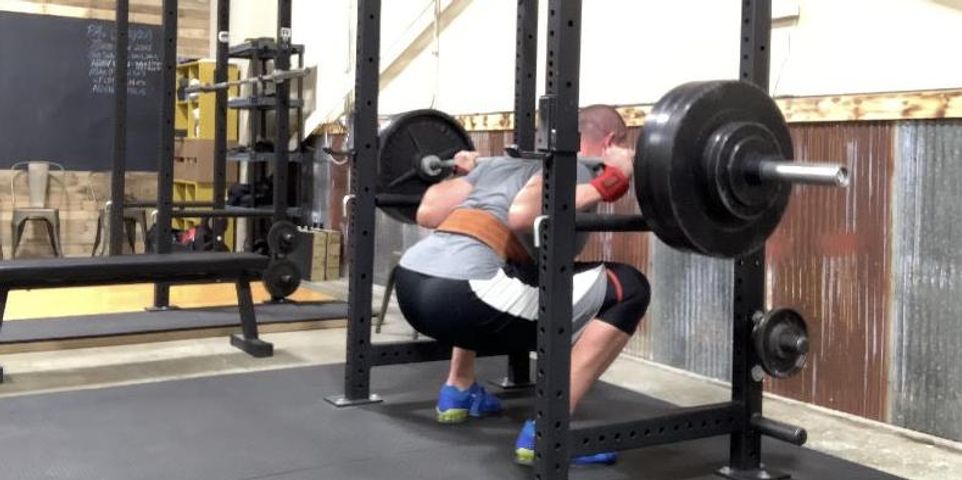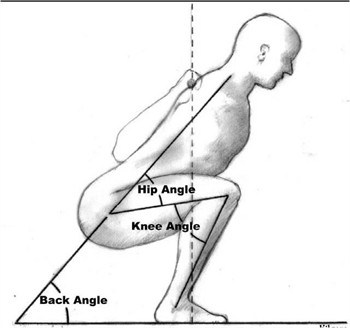
There are 3 main squat variations, all of which have slightly different form. We will discuss the low bar back squat (LBBS), high bar back squat (HBBS), front squat (FS). In order to fully understand which squat to choose we will have to look at force production and gravity, and their relationship to the lifter in the squat. This is important to understand because we want to maximize training adaptations and be able to choose the lift that is best for your goals. “But I heard squats are bad for your knees/back/hips.” This is a very common concern when faced with squatting for the first time. However, this is simply an uneducated stance on the movements being performed, nothing more. Hopefully by the end of this article you can be more confident in your form and choice to start and continue to squat for life!
First, let’s talk about balance. To understand how a barbell interacts with us (the lifter) we must identify that gravity acts in a manner that is straight down. If I were to drop a rock from shoulder height, where would it go? Straight down. It would take extra force acting on the rock to get it to move in any other manner. Why is this important? Well when we are under “load” (aka the barbell) it wants to move straight down. So it would make sense that we would need to balance this load effectively. Our center of mass or “balance point” is termed mid-foot. This means that when the bar is loaded on our body, it needs to remain as close as possible to over mid-foot. If the bar did not, then this would technically be inefficient movement.
Let’s quickly discuss moment arms or levers that are created when we squat. The horizontal distance created between the barbells gravitational vector (imaginary line from the barbell straight down to the floor) and moving joints on either side of this line create levers. The image below shows us a view of a properly balanced LBBS. We see the bar residing over mid-foot and the crest of the hips 1” below the top of the knee. Note the eye gaze…..down. You can see the distance from the dotted line (gravitational vector of the barbell) and the hip joint is further than that of the dotted line and the knee joint. So what does this all mean? Simply that in this squat the hips have a better mechanical advantage to apply force to the system and get the barbell moving upward.

To decipher the difference between the three squats we can look at these moment arms/levers and how they change depending on where you put the bar on your body. As you look at the picture below you will see a relatively long moment arm about the hips in the LBBS and a relatively short moment arm about the hips in the FS, and if we look at the middle (HBBS) we can see that this is somewhere in between the aforementioned. So we can take away that depending on where we place the bar, our torso and therefore knees will have to move in order to keep the bar over mid-foot.

Now if we use our newfound knowledge of moment arms and torque we can decide which squat is the best for each individual. The LBBS will show a more horizontal torso and more vertical shin. Generally, we like the LBBS because there is more musculature about the hips which allows us to squat more weight or more reps. And remember that “squats are bad for your knees” business earlier? We would suggest that the LBBS produces minimal stress on the knees as the moment arm about the knee is relatively short therefore reducing the amount of “torque” at the knee. It should be noted that all squats still put “stress” about the knee, just in different amounts. Now if someone had a hard time maintaining the bar/rack position in the LBBS or they had a back issue that prevented them from keeping safe lumbar extension, we may then recommend the HBBS or even FS. The HBBS will show a more vertical torso and more horizontal shin when compared to the LBBS. Because of this the load of HBBS will reduce, yet still remaining heavier than the FS due to the longer moment arm at the hips. As a tertiary to the previous two squats we could implement the FS. The FS will show us a very vertical torso and more horizontal shin. Due to the increased moment arm about the knee and decreased moment arm at the hips the load will again decrease. It should be noted that the more one style of squat is trained the more technically proficient the lifter becomes, which also carries a role in how much weight or reps can be done. Lastly, there is one other squat that is sometimes trained and this is the Overhead Squat (OHS). This squat can be performed in any fashion, but, you guessed it….the bar must remain over midfoot. Most would choose to OHS with technique resembling the FS because it requires less chest flexibility. The farther you lean over, the more flexibility is demand of the chest/shoulders. However, this is all really a moot point because the limiting factor of the OHS is not our leg strength but our shoulder strength. Therefore this is not a good choice to increase leg strength.
After all this discussion we may be able to say a certain squat technique is “superior”. But the main take home is that “squatting in any fashion is better than not squatting at all”! So find what works for you, what you can get comfortable with and make steady progress with the bar. If you do this regularly with good form you will notice your joints feeling better, not to mention a drastic strength increase.
For help in reaching your goals, email us to set up a meeting with one of our certified personal trainers. Our team of trainers offers a variety of workouts and fitness classes designed to help you achieve your personal goals. Email support@gofreedomfit.com to get the ball rolling.
About the Business
Have a question? Ask the experts!
Send your question

